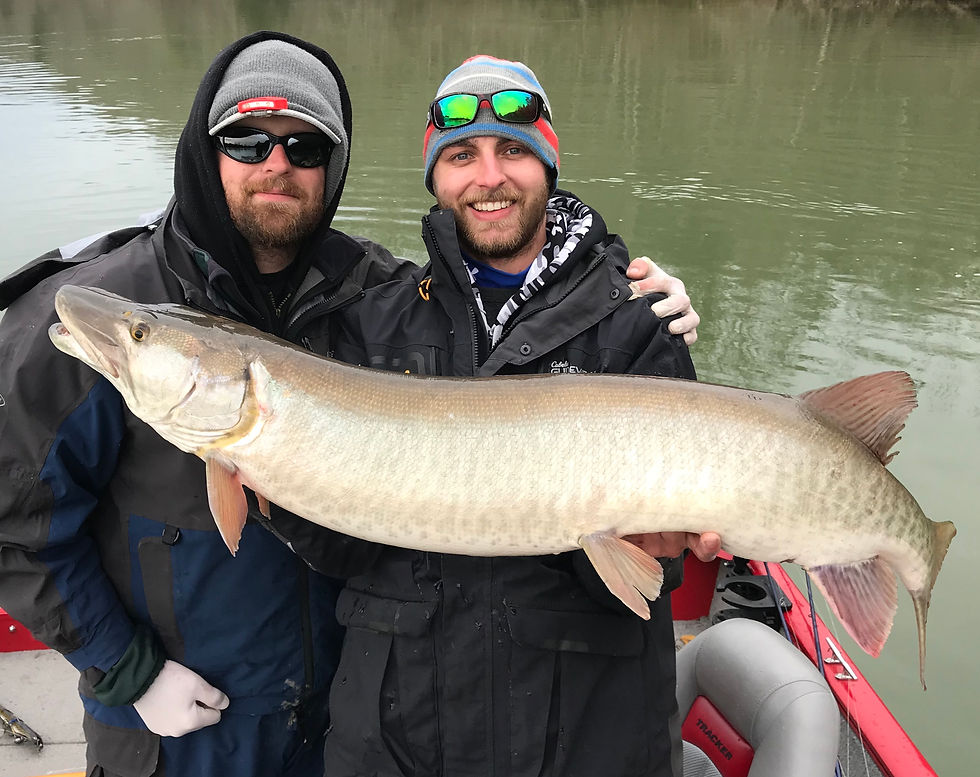Tennessee Musky Fishing Winter Tactics
- Steven Paul
- Dec 28, 2021
- 2 min read

Tennessee Musky Fishing is a year round event, while northern anglers are setting up their ice shanties the bite down south is just getting hot.
Not many musky anglers can say they have experience casting open water for musky during winter. Needless to say and these cold months come with their unique musky patterns and challenges. During cold snaps patterning mostly sluggish fish can be challenging as the daily movements of muskies can be just a few feet from deep breaks to shallow water feeding zones.
Capitalizing on these extremely narrow musky feeding windows is prerequisite for sucess so lets look a few prime location types to target Tennessee Musky in the winter.
Steep Breaks
As winter sets in Tennessee Musky and forage alike stage in areas that allow for vertical movement. Areas with drastic drop offs become the key to locating actively feeding musky.
Areas to focus on are cliff like drops that plunge from the typical three to five foot shallows to main basin depths. Keep in mind deep is a relative term so dependent on what Tennessee musky water you are fishing the "deep zones" may only be in the ten and twelve foot zone. Tennessee musky will make vertical movements up these steep cliffs once or twice daily so hitting these locations in and around sun up / sun down and major solar lunar events in imperative.
Locating step breaks and cliffs with bait fish and cover such as rock and timber should be your primary focus.
Creek Mouths
Creeks are a year round hot spot for predators but these become critical areas of focus during winter fishing for Tennessee Musky. Creeks introduce not only introduce new water into a system they provide thermal options for musky and bait fish. Post frontal conditions often point to a creek mouth musky bite as rain water run off introduces nutrients and forage for the entire food chain. Active Tennessee Musky will stage in and around creek mouth and will capitalize in any changes in their rate of inflow, water color or temperature.
Rock Structure
Much can be said regarding rock and stone as it pertains to cover for musky. However rock that is structural can be a game changer for landing Tennessee musky in the winter months.
Anglers should focus on areas of shoreline that's composition is not just comprised of broken or chuck rock but look for actual hard shoreline. These predominantly shoreline are a thermal refuge for musky during the coldest of conditions. Rocky shorelines retain and radiate not only the suns heat but also geothermal heat. While these temperature differences may be nearly impossible to gauge with your boats electronics Tennessee musky know they can lay against these rocky hot spots in the coldest of conditions
Tennessee Musky Fishing sucess often requires more structural forethought during winter months. Lake knowledge and patterning are truly they keys to winter musky fishing success.
Be sure to be observant of structure, temperature and forage movements during the winter.
Steven Paul



